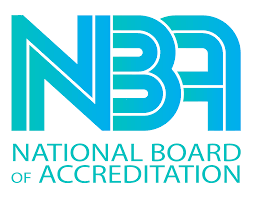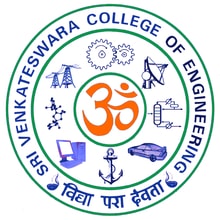Profile
About the Department
The Department of Electrical and Electronics Engineering was started in the year 1985 to cater to the needs of the Electrical engineering subjects in Electronics and Communication Engineering, Mechanical Engineering and Computer Science Engineering. Starting with an intake capacity of 60 in 1994 the Department of Electrical and Electronics Engineering is now catering to the growing need of 120 students. The Department has secured permanent affiliation with Anna University and accredited for five years by NBA for the third consecutive time.
The post graduate program (M.E) in Power Electronics and Drives was started in 2002.The Department has an intake strength of 06. The Department has well equipped state -of- the- art laboratories and is recognized as a nodal research centre of Anna University. The Department has well qualified, experienced faculty and staff members of proven ability and profound skills. The Students of the department are being placed in various reputed companies and substantial number of students pursue higher studies abroad.
There are 31 faculty members in the department, out of which 18 of them are PhD holders, 11 of them are pursuing their PhD.
PROGRAMMES OFFERED
Under Graduate:
B.E. in Electrical and Electronics Engineering, Annual intake: 120
Post Graduate:
M.E. in Power Electronics and Drives, Annual intake: 06
Department of EEE is accredited by the National Board of Accreditation for the third consecutive time for Five Years, and is currently valid till 30-06-2025.

Vision of the Electrical & Electronics Engineering Department
The vision of Electrical and Electronics Engineering Department is to provide a high standard of education in Electrical and Electronics Engineering so as to meet the industry standards through domain knowledge, programming and soft skills.
Mission of the Electrical and Electronics Engineering Department
• To create state of the art facilities such that the students excel in Electrical and Electronics Engineering education.
• To equip students with a well defined curriculum to meet the requirements of industries and society.
• To promote a culture of research, innovation and entrepreneurship in the thrust and allied areas of Electrical and Electronics Engineering.
• To inculcate soft skills and foster ethical values and shape the total personality of the students.
Program Educational Objectives for UG Program (PEOs)
I. Graduates will serve as engineering contributors in the emerging fields of Electrical, Electronics and Computer Engineering.
II. Graduates will become entrepreneurs through human centered design thinking and innovation.
III. Graduates will be successful in pursuing higher studies in engineering or management.
IV. Graduates will be effective and ethical team player in the field of green energy management and sustainability
Program Outcomes (POs) For UG Programme
1. Engineering knowledge: Apply the knowledge of mathematics, science, engineering fundamentals, and an engineering specialization to the solution of complex engineering problems.
2. Problem analysis: Identify, formulate, review research literature, and analyze complex engineering problems reaching substantiated conclusions using first principles of mathematics, natural sciences, and engineering sciences.
3. Design/development of solutions: Design solutions for complex engineering problems and design system components are processes that meet the specified needs with appropriate consideration for the public health and safety, and the cultural, societal, and environmental considerations.
4. Conduct investigations of complex problems: Use research-based knowledge and research methods including design of experiments, analysis and interpretation of data, and synthesis of the information to provide valid conclusions.
5. Modern tool usage: Create, select and apply appropriate techniques, resources, and modern engineering and IT tools including prediction and modeling to complex engineering activities with an understanding of the limitations.
6. The engineer and society: Apply reasoning informed by the contextual knowledge to assess societal, health, safety, legal and cultural issues and the consequent responsibilities relevant to the professional engineering practice.
7. Environment and sustainability: Understand the impact of the professional engineering solutions in societal and environmental contexts, and demonstrate the knowledge of, and need for sustainable development.
8. Ethics: Apply ethical principles and commit to professional ethics and responsibilities and norms of the engineering practice.
9. Individual and team work: Function effectively as an individual, and as a member or leader in diverse teams, and in multidisciplinary settings.
10. Communication: Communicate effectively on complex engineering activities with the engineering community and with society at large, such as, being able to comprehend and write effective reports and design documentation, make effective presentations, and give and receive clear instructions.
11. Project management and finance: Demonstrate knowledge and understanding of the engineerig and management principles and apply these to one's own work, as a member and leader in a team, to manage projects and in multidisciplinary environments.
12. Life-long learning: Recognize the need for, and have the preparation and ability to engage in independent and life-long learning in the broadest context of technological change.
Program Educational Objectives for PG Program (PEOs)
I. Contribute professionally in fields of Power Electronic and related domains.
II. Manage and execute research and development projects leading to technological solutions that address industries and society.
III. Succeed in pursuing higher studies in engineering domains.
Program Outcomes (POs) for PG Programme
PO1: An ability to independently carry out research /investigation and development work to solve practical problems.
PO2: An ability to write and present a substantial technical report/document.
PO3: Students should be able to demonstrate a degree of mastery over the area as per the specialization of the program. The mastery should be at a level higher than the requirements in the appropriate bachelor program.
Program Specific Outcomes (PSOs) for UG Programme
R2022
PSO1: Design, analyse and implement Power Electronics circuit with smart control systems for Industrial drives and Electric Vehicles.
PSO2: Analyse safety, stability, control and protection of vertical and deregulated Smart grid Power systems and interconnection of microgrid comprising Renewable, Storage and Nano technologies.
PSO2: Analyse safety, stability, control and protection of vertical and deregulated Smart grid Power systems and interconnection of microgrid comprising Renewable, Storage and Nano technologies.
R2018
PSO1: The ability to build, implement, test and maintain analog and/or digital systems and implement Electronic control of Drives for Industrial automation and Electric Vehicle.
PSO2: The ability to analyze Power System network encompassing stability, control & protection and interconnection of Renewable Energy Sources with Micro and smart grid.
PSO2: The ability to analyze Power System network encompassing stability, control & protection and interconnection of Renewable Energy Sources with Micro and smart grid.
R2016
PSO1: The application of circuit analysis and design, Computer Programming, Linear and Digital Electronic Circuits, Microprocessor, Power Electronics, and Embedded Systems in building,testing, operation, and maintenance of electronic(s) systems.
PSO2: The ability to analyze, design, and implement one or more of the following: Electrical Machines, Control Systems, or Power Systems Operation, Stability, Control and Protection in building,testing, operation, and maintenance of electrical systems.
PSO2: The ability to analyze, design, and implement one or more of the following: Electrical Machines, Control Systems, or Power Systems Operation, Stability, Control and Protection in building,testing, operation, and maintenance of electrical systems.
Program Specific Outcomes (PSOs) for PG Programme
PSO1:The ability to design and analyze Power Electronic converters and control of Electric drives for Industrial applications.
PSO2: The ability to apply Power Electronic Circuits in Transmission and distribution network of Power System and interconnection of Renewable Energy Sources with Micro and smart grids.
PSO2: The ability to apply Power Electronic Circuits in Transmission and distribution network of Power System and interconnection of Renewable Energy Sources with Micro and smart grids.



